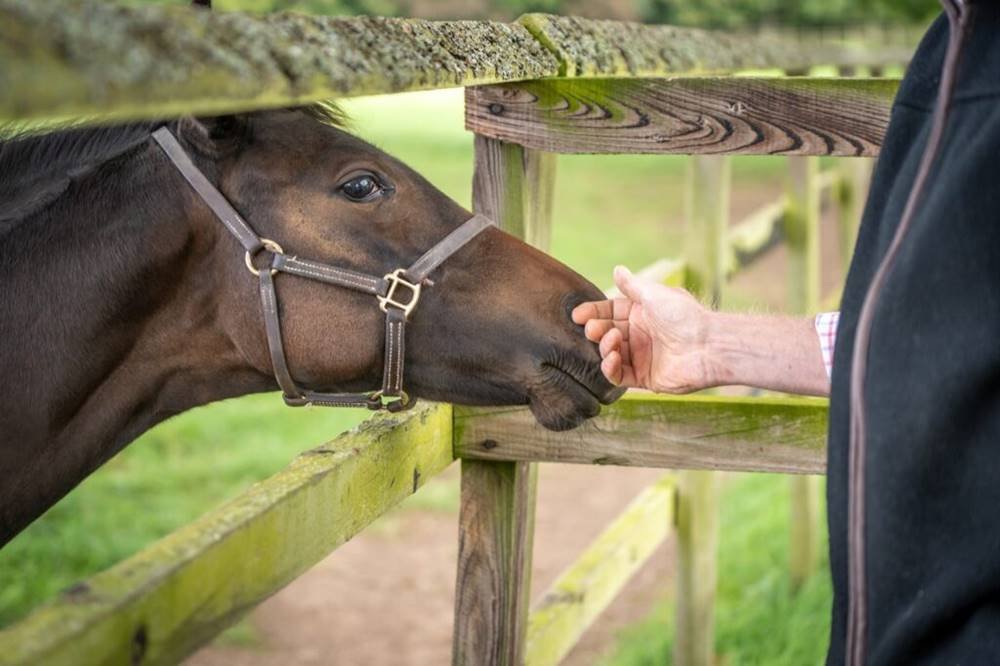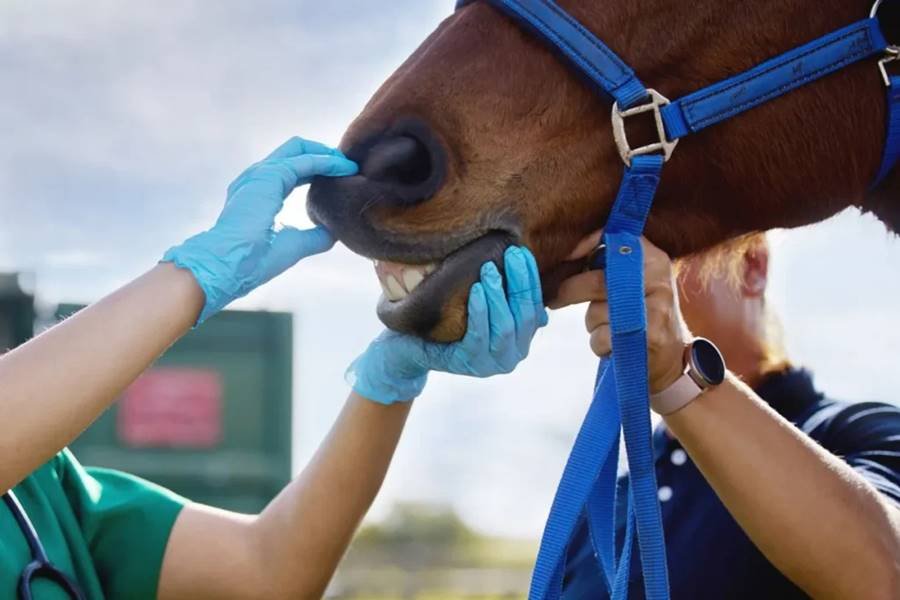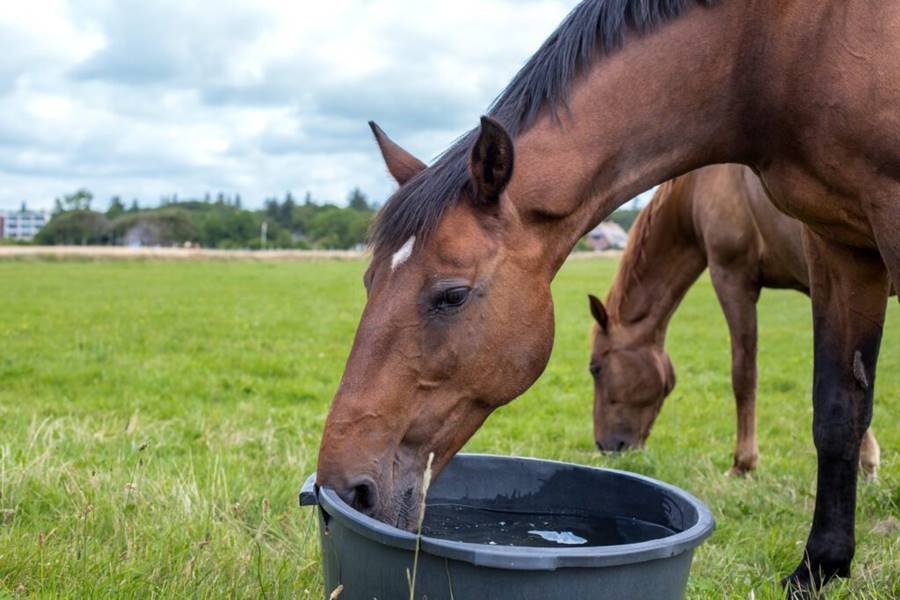As a horse owner, one of the most concerning things you might notice is your horse having trouble with movement or showing signs of discomfort.
One common issue that can impact your horse’s mobility is a condition known as locked stifle joint. While it may sound alarming, understanding what locked stifle joints are, how to spot the signs, and how to treat it can help you care for your horse better. Here’s everything you need to know about this condition and how it can affect your horse.
What is a Locked Stifle Joint?
The stifle joint in horses is the equivalent of a human knee. It’s a complex joint that allows the horse to bend and straighten its hind legs. The stifle joint is made up of several bones, ligaments, and tendons, and it plays a crucial role in a horse’s ability to move freely and with fluidity.
A locked stifle joint occurs when the patella (knee cap) of the horse becomes “stuck” in a fixed position, which prevents the horse from being able to fully extend or flex its leg. This can cause the horse to appear stiff, unable to move properly, or even drag its leg.
While the condition is more common in younger horses or those in training, it can affect any horse at any stage of life. The good news is that in many cases, it can be managed or resolved with the right treatment.
Causes of Locked Stifle Joints in Horses
Locked stifle joints typically occur due to an imbalance in the horse’s hind leg mechanics. There are a few different reasons why this condition might develop:
- Immature Musculoskeletal System: Young horses, especially those that are still growing, often have underdeveloped muscles and ligaments that can result in an unstable stifle joint. This can cause the patella to “catch” in the wrong position.
- Weakness in the Quadriceps: The quadriceps muscles play a key role in stabilizing the stifle joint. If the horse’s quadriceps are weak, it can lead to difficulty in keeping the joint properly aligned, increasing the chances of the patella getting stuck.
- Poor Conformation: Horses with certain conformation issues, such as improperly aligned hind limbs or poor joint angulation, are more likely to experience problems with their stifle joints. In these cases, the risk of locked stifle can be higher.
- Overworking or Intense Training: Overuse or sudden increases in activity, especially in younger horses or those in heavy training, can put a strain on the stifle joint. This may cause the patella to slip out of place and become locked.
- Genetics: Some horses are more predisposed to developing locked stifle joints due to their genetic background. Breeds like the Thoroughbred and Standardbred are often more susceptible to this condition.
Symptoms of Locked Stifle Joints
Recognizing the signs of a locked stifle joint early can help prevent further complications and improve your horse’s chances of a quick recovery. The most common symptoms include:
- Stiffness or Lameness: The horse may appear stiff in its hind legs, especially when walking or trotting. It may also show signs of lameness, particularly on one side.
- Dragging of the Leg: In some cases, the horse may drag one of its hind legs or have difficulty lifting it off the ground.
- Abnormal Gait: Horses with locked stifles may have a short, choppy gait. They may seem hesitant to move forward or reluctant to bend their hind leg.
- Difficulty in Flexing the Joint: The horse may struggle to bend or extend its stifle joint. It might also hold its leg in a fixed, straightened position for longer than usual.
- Intermittent Lameness: Sometimes, the locked stifle joint may only cause problems intermittently, with the horse appearing fine one moment and then showing signs of discomfort the next.
How is Locked Stifle Diagnosed?
If you suspect your horse has a locked stifle joint, it’s important to get a proper diagnosis from a veterinarian. The vet will likely perform a physical examination to assess the range of motion of the stifle joint and look for any signs of discomfort. They may also recommend diagnostic imaging, such as an X-ray or ultrasound, to rule out other joint or bone problems.
In some cases, the vet may need to perform a manual test where they gently flex and extend the stifle joint to see if the patella locks in place. They may also test the horse’s gait to observe how the issue affects movement.
Treatment Options for Locked Stifle Joints
The good news is that most cases of locked stifle joints are treatable, and many horses recover fully with proper management. Treatment options vary depending on the severity of the condition, the horse’s age, and overall health.
- Rest and Rehabilitation: For mild cases, especially in young horses, rest is often the first line of treatment. Allowing the horse to rest for a few weeks can help the muscles and ligaments strengthen, reducing the likelihood of the stifle locking again.
- Exercise and Conditioning: Once the horse is rested, a gradual exercise program to strengthen the hindquarters and quadriceps is essential. This can help the horse regain muscle tone and improve the stability of the stifle joint. Hill work and lungeing can be particularly beneficial for building muscle strength.
- Stifle Joint Surgery: In some cases, surgery may be necessary. One common surgical procedure is called a medial patellar desmotomy, which involves cutting a ligament around the stifle joint to help prevent the patella from locking. This is usually considered when the condition is severe or does not improve with conservative treatments.
- Alternative Therapies: Some owners opt for complementary therapies like acupuncture, chiropractic care, or laser therapy to help reduce pain and promote healing. While these treatments are not a substitute for veterinary care, they may help improve recovery time.
- Preventative Measures: To avoid further stifle issues, ensure that your horse is not overworked and that it maintains a healthy, balanced exercise routine. Regular vet check-ups and proper hoof care are also crucial for keeping your horse’s joints in good condition.
Prognosis: Can Horses Fully Recover from Locked Stifle Joints?
The prognosis for a horse with a locked stifle joint is generally very good, especially if the condition is caught early and treated appropriately. Many horses fully recover and go on to lead active, productive lives. In fact, horses that have had locked stifle joints often return to competitive levels of performance with proper management.
However, if left untreated, locked stifle joints can lead to more serious complications, including long-term lameness or chronic pain. Early intervention is key to ensuring the best outcome for your horse.
Final Thoughts
Locked stifle joints in horses can be worrying, but with the right approach, most horses can recover and return to normal activity. By understanding the causes, symptoms, and treatments of this condition, you can take the necessary steps to ensure your horse’s health and comfort. Regular exercise, a balanced diet, and early veterinary intervention are essential for preventing stifle issues and helping your horse stay in top shape.
If you notice any signs of discomfort in your horse’s hind legs, don’t hesitate to consult with your veterinarian to get the best possible care for your equine companion.




